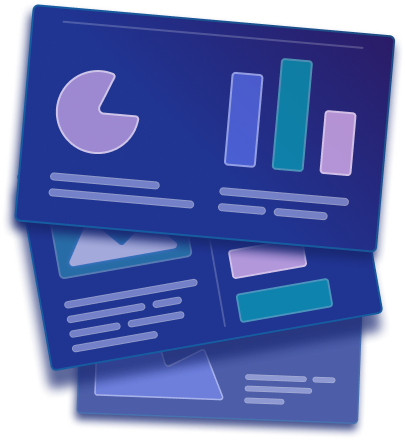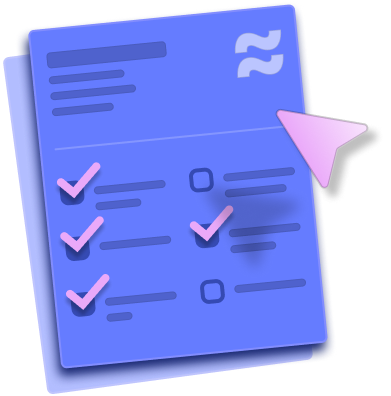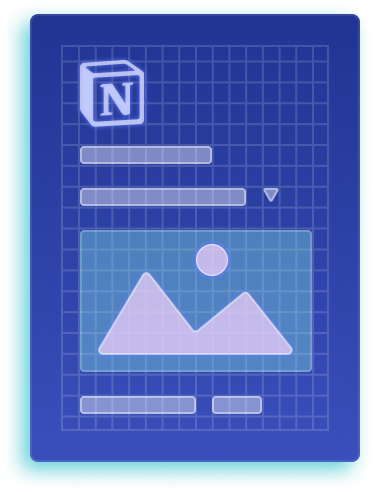Webflow Slack Integration
Slack is the most popular platform for communication and collaboration. Automate it with Webflow to streamline workflow.

.svg)

.svg)


.svg)
About Slack
Slack is a popular team collaboration and communication platform that was first introduced in 2013. It has since become a fundamental tool for organizations of all sizes, ranging from small startups to large enterprises. Slack is designed to streamline communication, enhance productivity, and facilitate teamwork among team members, whether they work in the same office or remotely.
Thanks to its ability to integrate various tools and services and be automated with many of them, Slack has been used to streamline workflows as well. It can be connected to various web design and development services, including Webflow. That’s mainly possible by using third-party automation tools, such as Zapier. However, there are other ways to connect Slack and Webflow. Let’s check out how to do it.
Why Connect Webflow and Slack
The main reason why someone would like to automate Webflow and Slack is to receive messages in Slack for the various events that someone does on the Webflow site. You can, for example, automatically send form submission data from Webflow to a dedicated Slack channel or to the relevant team members.
Here are some of the other use cases of Webflow Slack automation.
- Content updates — Automate content publishing or updates in Webflow using Slack commands, scheduling actions for precise timing.
- Task management — Use Slack integration to create, assign, and update tasks in Webflow or task management tools like Asana or Trello, enhancing project organization.
- Analytics reports — Set up automated Webflow reports in Slack, delivering regular insights on website performance and key metrics.
- Knowledge sharing — Automatically share documents, resources, and links related to Webflow projects in dedicated Slack channels for easy access.
- Customer support — Implement Slack chatbots for handling common support inquiries on Webflow sites, escalating complex issues when necessary.
- Scheduled reminders — Use Slack to schedule and automate reminders for meetings, project milestones, or content updates in Webflow.
- Feedback surveys — Automate the distribution of surveys and feedback forms to collect input from team members or website visitors, with results reported in Slack.
- E-commerce integration — For Webflow e-commerce sites, automate order notifications, inventory updates, and payment alerts in Slack.
Here are some of the main benefits of Slack Webflow integration.
- Efficiency — Automation reduces the need for manual intervention and repetitive tasks, allowing your team to focus on more strategic and creative aspects of their work.
- Real-time updates — Automation ensures that important updates and notifications from Webflow are instantly delivered to relevant Slack channels or team members, enabling faster responses and decision-making.
- Accuracy — Automation reduces the risk of human errors associated with manual data entry and processes.
- Improved collaboration — By automating tasks and notifications, teams can collaborate more effectively, share information seamlessly, and stay aligned on project progress.
- Time savings — Automation frees up valuable time that can be redirected toward more productive and creative tasks.
- Consistency — Automated processes ensure that tasks are carried out consistently and according to predefined rules and workflows.
{{cta}}
Common Challenges When Integrating Slack and Webflow
Here are some things to consider regarding Webflow and Slack automation.
- Complex integration — Integrating Slack and Webflow can be technically complex, especially for automating multiple processes.
- Data consistency — Ensuring data consistency between Slack and Webflow can be challenging, leading to potential errors and confusion.
- Workflow design — Designing effective automated workflows that meet specific team needs requires careful planning.
- Security — Managing authentication and data security between the platforms is crucial for protecting sensitive information.
- Error handling — Handling errors during data transfer or automation processes is important to maintain a smooth workflow.
- Monitoring and optimization — Regularly monitoring and optimizing automated processes for efficiency and performance is an ongoing task.
How to Connect Slack and Webflow
There are several ways to connect Slack and Webflow. The most popular is using third-party tools, including Zapier, Make, Integrately, and more.
You can also use Webflow logic and connect Slack directly.
The following explanation focuses only on automating Slack messages when someone fills out your Webflow form. However, there are many different ways to automate the two.
Step 1: Create a Slack Bot
- Go to your Slack workspace and access the "Apps" section.
- Search for "Bots" and click on "Bots" to create a new bot.
- Fill out the necessary information for your bot, such as its name and description.
- Install the bot into your workspace.
Step 2: Configure Bot Scopes
To allow the bot to send messages in Slack, you need to configure its scopes. Here's how:
- In the bot settings, go to "Scopes" or "Permissions."
- Ensure your bot has the following scopes: "chat:write," "channels:join," "channels:read," "groups:read," and any other permissions you may need for your specific use case.
- Save your changes.
Step 3: Obtain the Slack Bot API Token
You'll need the API token for your Slack bot to authenticate and send messages. Here's how to get it:
- Locate the API token in your bot settings.
- Copy the API token to use it in the integration.
Step 4: Set Up the Webflow Integration
Now, let's configure Webflow to send submissions to Slack using the bot.
- In Webflow, create an HTTP request to send information to Slack.
- Name this request something meaningful, like "Send Slack Message."
Step 5: Authentication
Configure the authentication for your Slack bot integration in Webflow:
- Choose "API Token" as the authentication method.
- Name the header
- Click to add a new credential
- Give it a name, something like “API for the Slack bot token”
- Under the field Token, enter “Bearer” as it’s part of calling the API from Slack.
- After Bearer, use the generated API token for the bot.
Step 6: Define the Slack Message
To specify the message that will be sent to Slack:
- Refer to the Slack API documentation for the "chat.postMessage" endpoint.
- Set the request URL to the Slack API endpoint.
- Configure the request method as "POST."
- Add the "Content-Type" header with the value "application/json."
Step 7: Configure the Message Body
In the request body, define the message and the channel where you want to send it:
- Set the "channel" in the body to specify the Slack channel where the message will be sent. Use {“channel”:“Channel ID”}. The channel ID is located when you examine channel details in Slack, all the way at the bottom.
- Define the "text" field to craft your message. Use {“text”:“sample text”} You can make this message dynamic by including form field values from Webflow, such as first name and last name.
Step 8: Test the Integration
Before deploying the automation, it's essential to test it thoroughly. Run the integration to ensure that it's working as expected.
- Perform a test submission on your Webflow form to trigger the automation.
- Verify that the submission is recorded in any relevant tool you’re using for this
- Finally, check the designated Slack channel to see if the bot has sent the expected message.
Step 9: Activate the Integration
Once you've successfully tested the automation, you can activate it by applying the changes in Webflow.
- Save and apply the changes in your Webflow project.
- Deploy your website if necessary.
Congratulations! You have now automated your Webflow submissions by sending Slack messages through a bot. Whenever a new form submission occurs, your bot will notify your team in Slack, making your workflow more efficient.
If this seems a bit overwhelming, that’s because it is. However streamlined with Webflow, making integrations is never easy, especially for more complex workflows. In such cases, it’s better to have Webflow experts’ assistance.
Webflow Requirements
Automating Slack and Webflow will require using one of the paid Webflow plans in order to unlock all of its capabilities. Which one? Well, it all depends on the size of your project. Make sure to understand how Webflow pricing works.
{{cta}}





The 2025 Playbook for Website Customer Acquisition
After helping 200+ clients skyrocket their conversions, we've created an in-depth marketing guide for turning websites into sales drivers.
.png)

.png)

in mind?
Talk with our team and learn how your ideas can become digital experiences.
Get a free webinar and subscribe to our newsletter
Maximize marketing ROI by learning how we cut development costs by up to 30% and propel growth with Webflow, design, and automation.
Webflow projects where we made Slack integration
See some clients who requested us to integrate Slack with Webflow and automate communication between these two tools.
Check Other Webflow integrations
See other relevant integrations that can help you with your Webflow project.
We get asked these questions often
Can you connect Webflow to Slack?
Yes, you can connect Webflow to Slack either via third-party tools, like Zapier, or using Webflow Logic.
Do I need third-party tools to integrate Slack with Webflow?
You do not necessarily need third-party tools to integrate Slack with Webflow. However, you'll need to create a Slack bot and configure the integration within Webflow using HTTP requests and the Slack API.
Is it difficult to automate Webflow and Slack?
Automating Webflow and Slack can be straightforward if you are familiar with API integrations and follow a step-by-step guide. The level of difficulty may vary depending on your familiarity with these technologies, but it's manageable with proper documentation and guidance. If you don’t have the required technical knowledge and Webflow background, it’s best to seek assistance from Webflow experts.




.svg)
.svg)
.svg)

.webp)
.svg)


